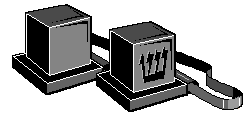Weekly Daf #105
Zevachim 37-43 -- Issue #105
22-28 Shevat 5756 / 12-18 February 1996
Rav Weinbach's insights, explanations and comments for the
7 pages of Talmud studied in the course of the worldwide Daf Yomi cycleThe Subtle Differences
In Parshas Vayikra two sacrifices are mentioned, one after the other, which come for different sins but are identical in regard to the animal offered and the rituals performed. The first is the bullock brought by the Kohen Gadol as a sin offering when in ignorance he gave sanction to something which the Torah prohibits under penalty of being cut off prematurely from life and then personally following his misguided ruling. The second is the bullock brought by the community when a majority of the nation has committed a sin of such a nature as a result of a ruling made in ignorance by the Sanhedrin.Two subtle differences, however, can be detected in the Torah account of the service prescribed for these two sacrifices. In the case of the Kohen Gadol the Torah is explicit about all the fats to be burned upon the altar, listing "appendage of the liver with the kidneys" while in regard to the communal sacrifice there is only a general statement about "all its fat." The blood sprinkled seven times in the case of the Kohen Gadol is described as being applied to "the sacred curtain" while the blood of the communal sacrifice is applied to just "the curtain."
The explanation offered by Rabbi Yishmael (as interpreted by Maharsha
in dissension from Rashi's commentary) is that the Kohen is compared
to the favorite of the king whom he has been chosen to serve.
Just as a human king who becomes angry with his favorite subject
strives to minimize his guilt so does Hashem spell out the details
of the Kohen Gadol's sacrifice to stress the magnificence of his
atonement to reduce his guilt. And just as a human king who has
been betrayed by a majority of his army that army can no longer
enjoy the status of royalty so does the sin of a majority of the
nation cause it to lose its sanctity while the Kohen Gadol, the
King's favorite, retains his sanctity even after sinning.
A Word And A World
 How do we know that the Tefillin we are commanded to wear on our
arms and heads must contain four chapters from the Torah?
How do we know that the Tefillin we are commanded to wear on our
arms and heads must contain four chapters from the Torah?
Rabbi Akiva analyzed the word "totafot" which the Torah instructs us to place "between your eyes." He explained that this unusual word is actually a combination of two words from different languages. In the Katfi tongue "tot" means two and in the Afrike language "fot" means two so that the two words add up to the number four.
How do words from foreign languages crop up in the Torah which is written in the Holy Tongue?
The answer lies in the Torah account of the Tower of Babel which
begins with the passage (Bereishis 11:1) "The whole earth
was of one language" which our Sages tell was the Holy Tongue
of Hebrew. Even when Hashem confounded their language by introducing
so many different tongues in order to disperse them some traces
of Hebrew remained in the new languages. We therefore find our
Sages turning to foreign languages (another example is the word
"hadar" used by the Torah for the esrog because it requires
so much "hydra" - Greek for water - to nourish its growth)
to reveal the meaning of an unusual word. The similarity of a
foreign word to the mysterious Hebrew word is an indication that
it is a survivor of that nation's original use of Hebrew.
General Editor: Rabbi Moshe Newman
Production Design: Lev Seltzer
HTML Design: Michael Treblow
© 1995 Ohr Somayach International - All rights reserved. This publication may be distributed to another person intact without prior permission. We also encourage you to include this material in other publications, such as synagogue newsletters. However, we ask that you contact us beforehand for permission, and then send us a sample issue.
This publication is available via E-Mail
Ohr Somayach Institutions is an international network of Yeshivot and outreach centers, with branches in North America, Europe, South Africa and South America. The Central Campus in Jerusalem provides a full range of educational services for over 685 full-time students. The Jewish Learning Exchange (JLE) of Ohr Somayach offers summer and winter programs in Israel that attract hundreds of university students from around the world for 3 to 8 weeks of study and touring.
 Copyright © 1995 Ohr Somayach International. Send us feedback.
Copyright © 1995 Ohr Somayach International. Send us feedback.Dedication opportunities are available for Weekly Daf. Please contact us for details.







